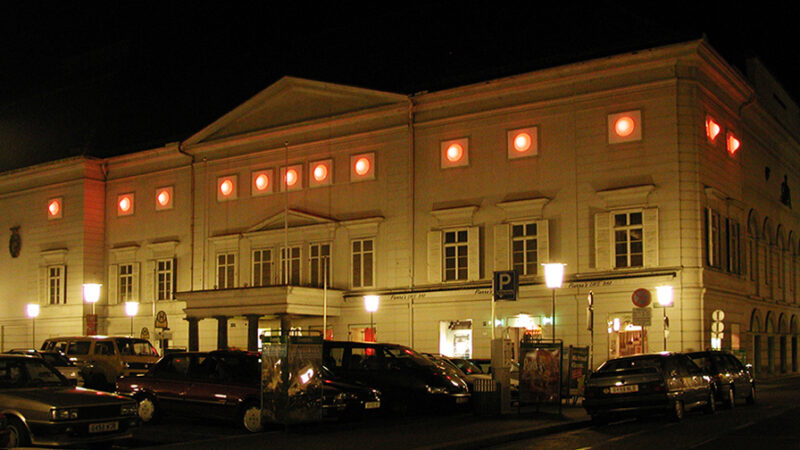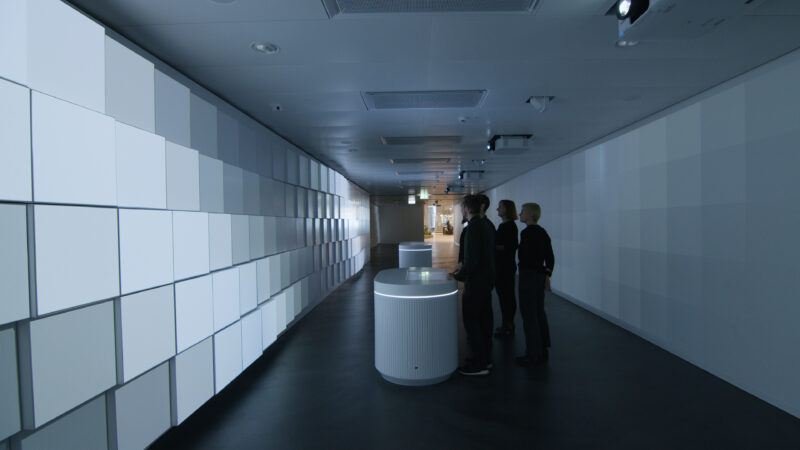History Reframed
The Media Façade of the Peter Jones Store in London Builds on a Historical Idea and Fits Seamlessly Into the Listed Building - While Playfully Reacting to the Current Weather.
In Short
Since 1877, London's elegant Chelsea neighbourhood has been home to the spacious Peter Jones department store on Sloane Square. The building, which is now landmarked as a grade II Modernist structure, was erected in the 1930s. The interiors were renovated in 2000, and now, finally, the exterior has been revamped. iart, in collaboration with architects, Sergison Bates, developed a media façade, inspired by the original blueprint, which melds seamlessly into the existing architecture, while at the same time revitalising it.
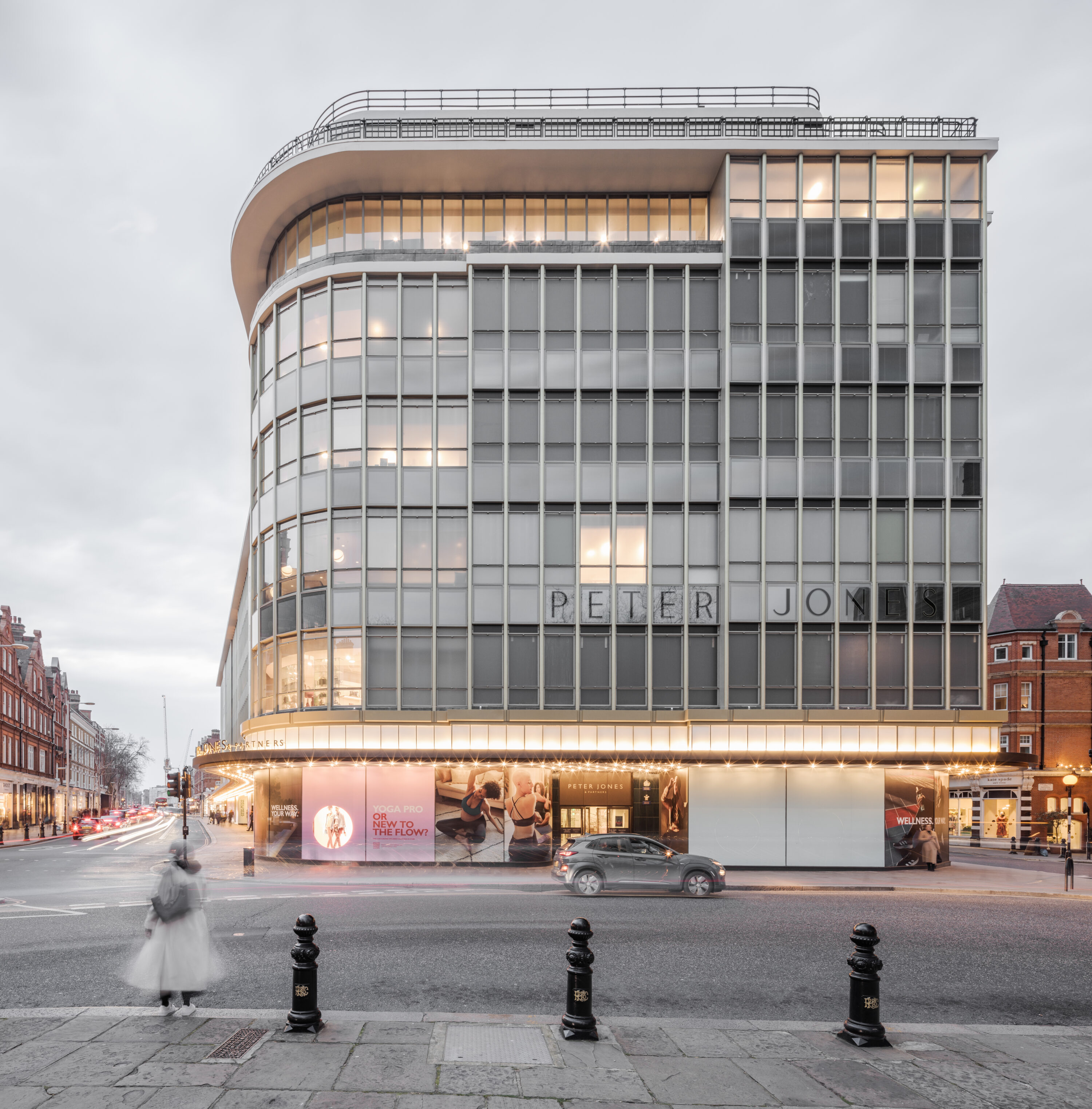
History of the Building
In 1932, John Lewis commissioned the architect William Crabtree to design a new department store. As the first steel-framed, glass-fronted building in Britain, it is particularly significant in the history of 20th century British architecture. Following an extension in 1963, important elements were listed by the National Heritage List for England (NHLE) between 1969-1971, making the department warehouse one of the first modernist buildings to be protected.
Overview
- Modernist building from 1932
- First steel-framed glass façade in the UK
- Listed since 1971
- Never implemented: Spandrel panels were to be seasonally coloured
- Building was intended to be an urban work of art
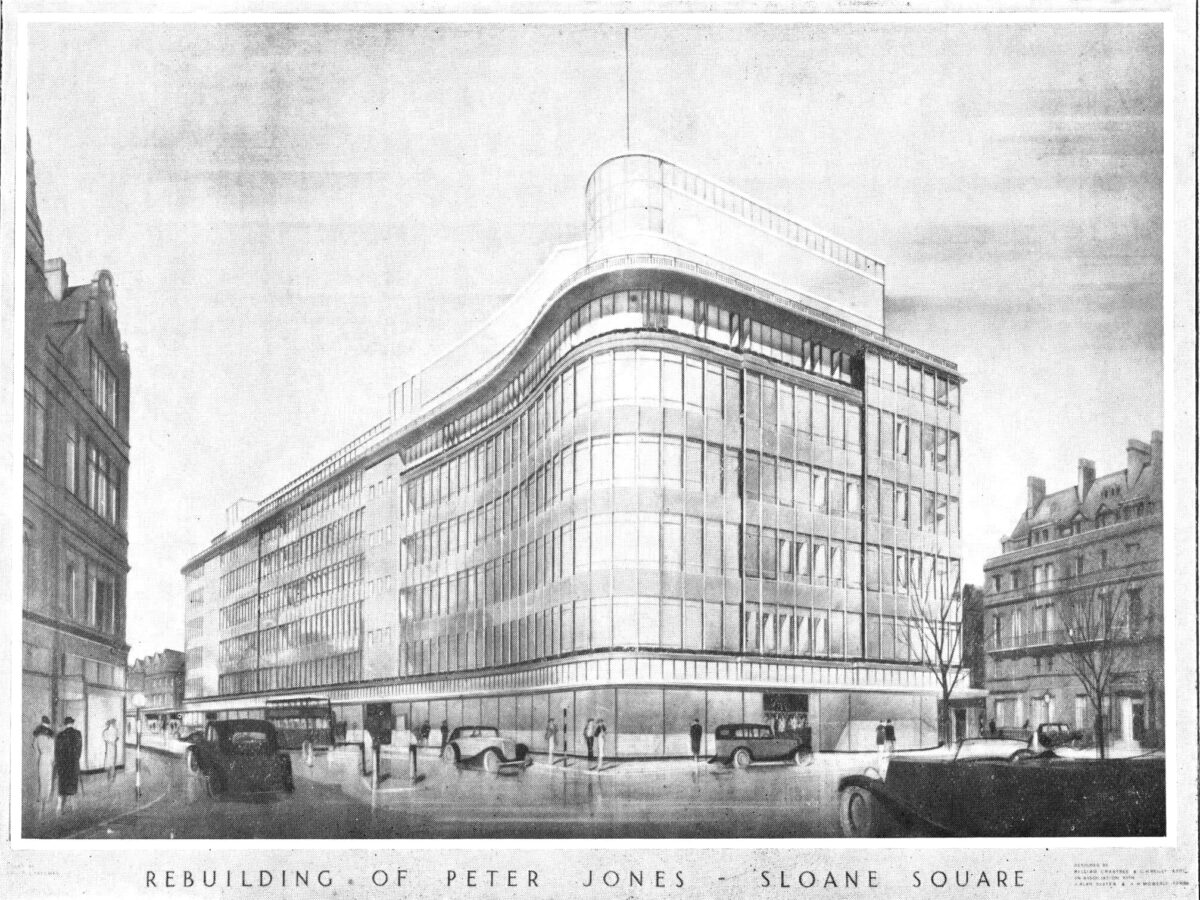
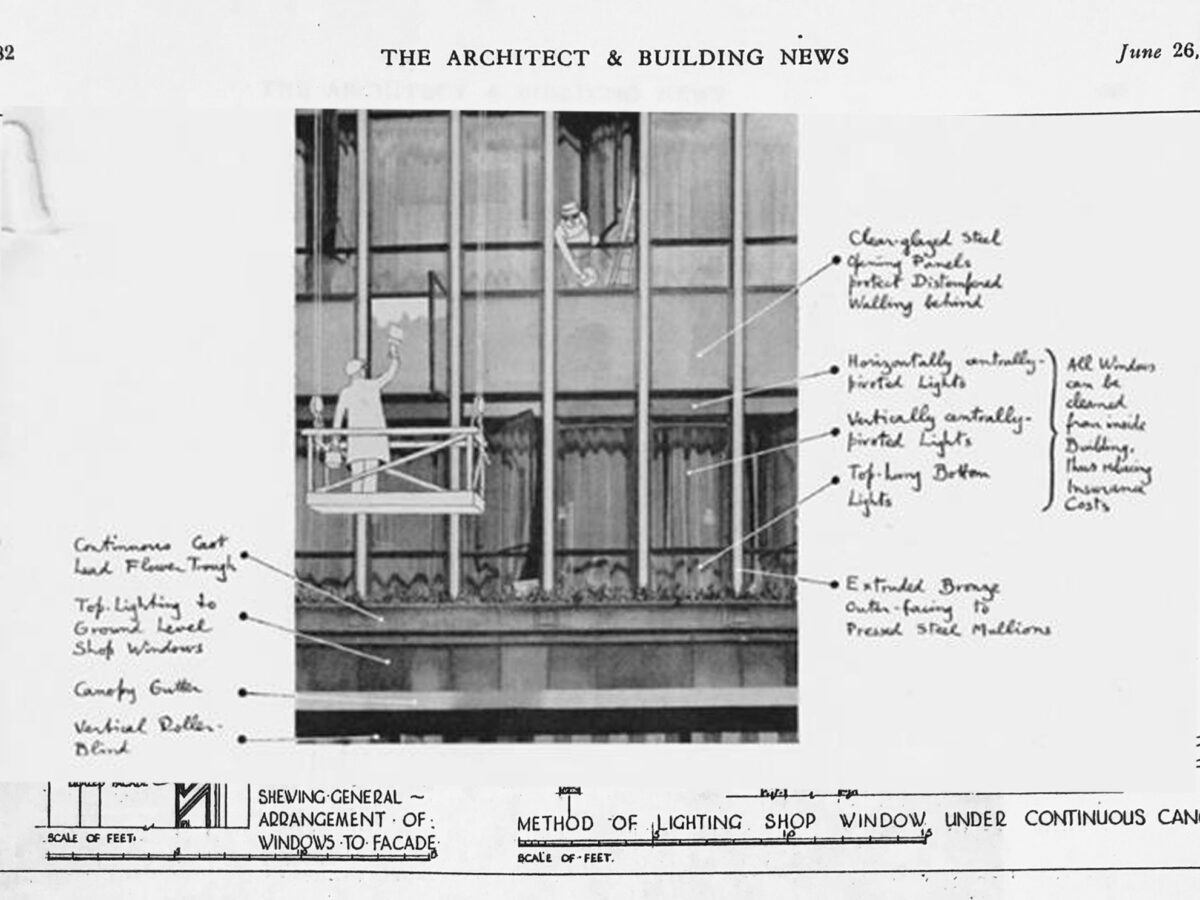
A Historic Idea Reinterpreted
Central to the solution developed by iart was that the original blueprints aspired to accommodate the possibility of urban artistic interventions— by means of imbuing the spandrel panels with shapeshifting palettes. Working with this unrealised concept, we developed panels that also dynamically change the appearance of the building. The glass-covered panels, fixed between the rows of windows, consist of delicate slats in front of a large LED backlight glowing in an array of colours across the RGB spectrum.
We wanted to create a striking facade that excites and attracts customers and better reflects the shopping experience they will find in store while being respectful to our heritage.Pippa Wicks, Executive Director John Lewis & Partnership
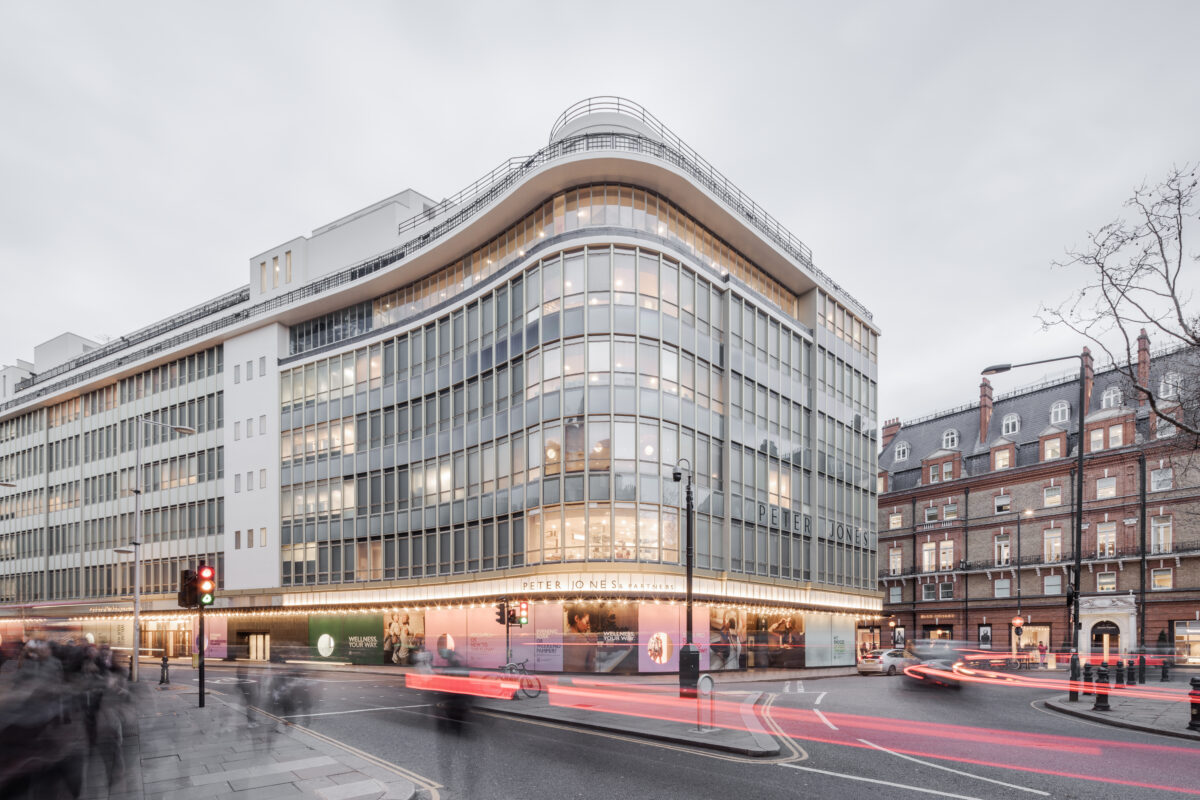
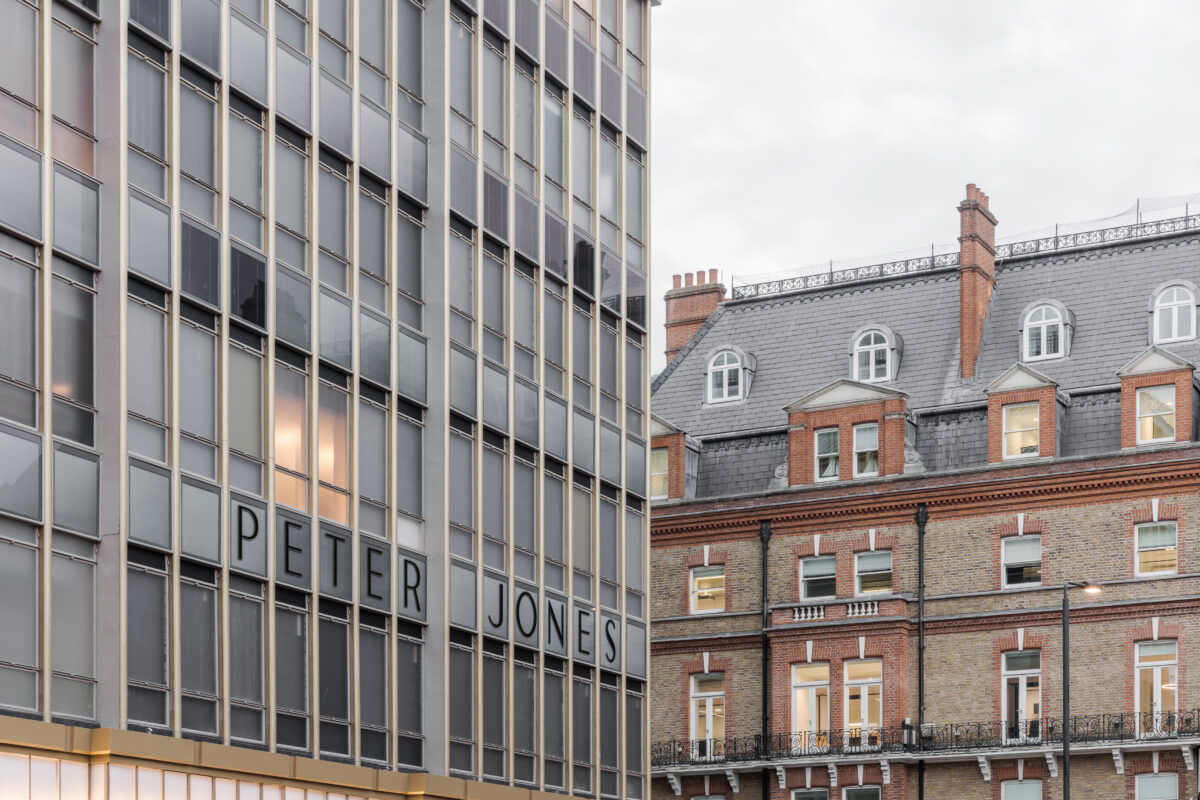
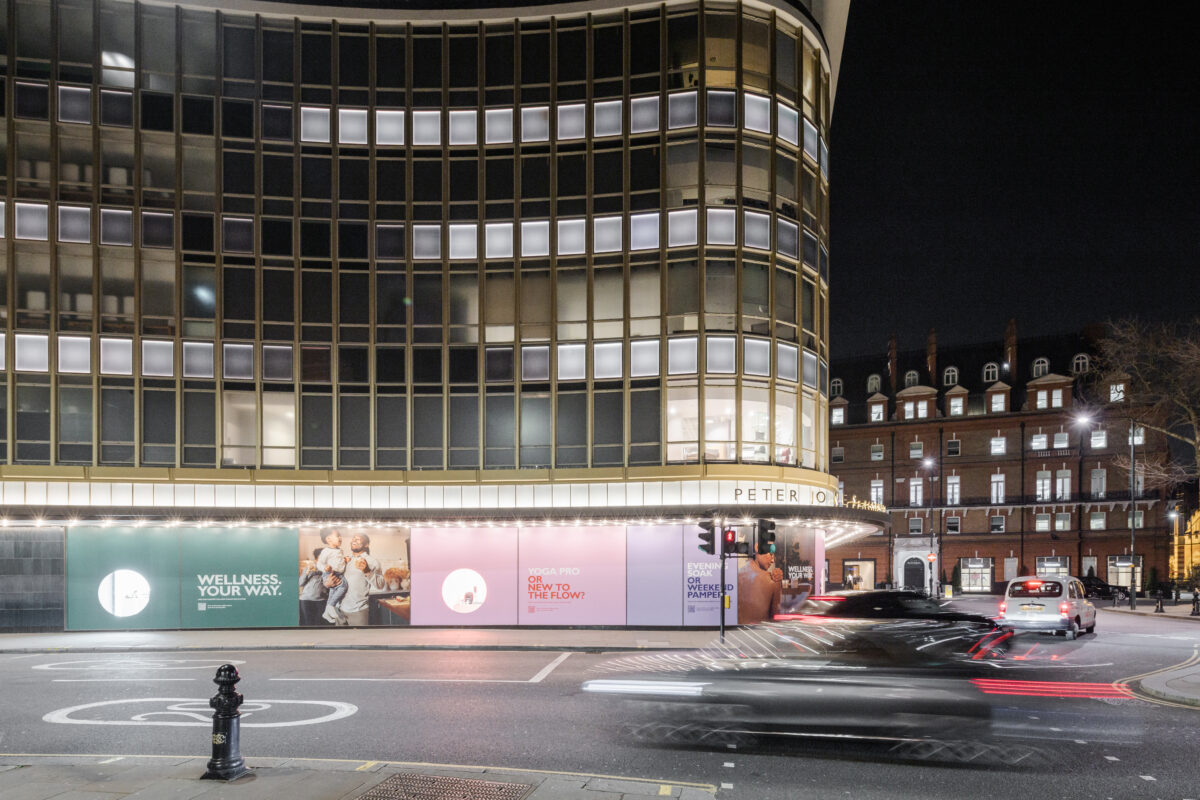
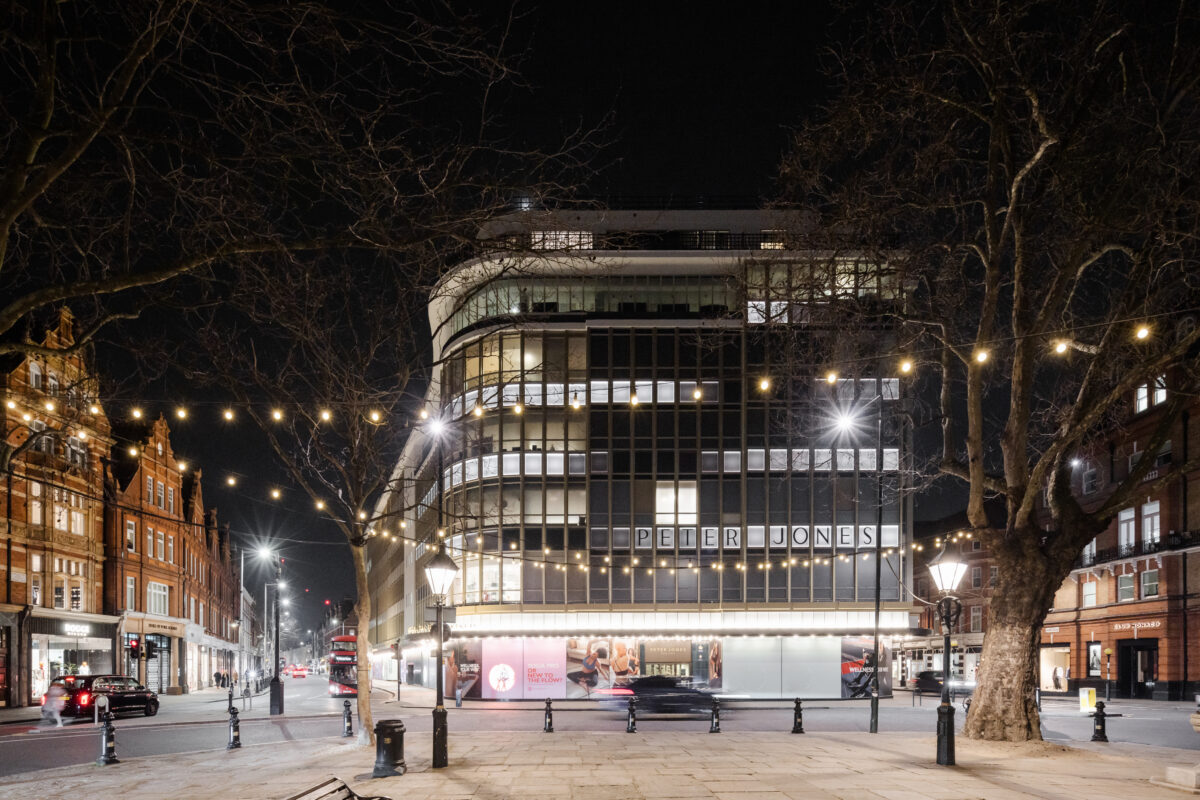
Day and Night Modes
In daylight, even a slight rotation of the blinds triggers a change in appearance. This is the subtle engineering of coating them white on one side and grey on the other. In the dark, the LED rear light activates and the rotation of the slats determines how much light shines outwards. Again, near imperceptible differences in brightness among the panels result in a varied, gradated mosaic that spans across the entire façade. In contrast to daylight mode, colour tones can now vary. The simple interplay of different shades of white and grey can be adapted for special occasions. For example, at Christmas 2021 the entire building glowed in a festive green.
Overview
- 133 panels with fine louvres
- By day: rotation causes shift between light and dark
- By night: LED rear light is flexibly activated
- Display reacts to current weather data
- Sun, wind and clouds change contrast, speed and colour
- Façade shows a different mosaic every day
Generative Content in Correspondence to the Weather
The façade is constantly updated with new generative content in real time. Each of the 133 panels is controlled individually. The generative variation is a result of the changing weather parameters. The so-called Lorenz model - named after the meteorologist Edward Lorenz - is the basis of the visualisation. It serves to illustrate the air pressure and shows circular structures, i.e. a repeating but never identical pattern. This is precisely the quality the façade is intended to have.
Reading the Facade
To guarantee frequent change, two Lorenz systems are superimposed. This creates a constantly changing visual rhythm. Movement, contrasts and brightness of the façade vary. Like a water surface in the wind, new patterns can be observed again and again. At the same time, they can be read like a barometer: On a hot day with high air pressure, clearer patterns will be visible. On a rainy day, by contrast, the patterns will be more fluid in movement and softer in contrast.
Construction of the Panels
iart both developed and executed the concept. Characteristically, the complex installation is based on simple individual elements. Each panel consists of an extremely fine blind that is rotated by a small quilting motor. Because the front and back are coated differently, the panels appear lighter or darker in daylight depending on the angle of the lamellae. The interior is protected by glass panels and backlit by LEDs that display the entire RGB colour spectrum.
Opening
2022
Location
London
Client
John Lewis & Partnership
Partner
Sergison Bates
Services
Assembly and InstallationProject ManagementProject ControllingCreative EngineeringElectronic EngineeringService and SupportMechanical EngineeringPrototype ConstructionProcess Design and ManagementRequirements ManagementCreative DirectionSoftware EngineeringSystem Design and DevelopmentTechnical Planning
Photos & Video Footage
Photos: Maris Mezulis. Video: iart and Cultureshock Media.
